Have you ever thought that your eyes could deceive you even during a vacation? Optical illusions in Italy are not just textbook experiments in psychology, but real attractions that combine art, science and mystery. From squares that seem to warp before your eyes to murals that play with perspective, our country hides amazing places capable of confusing even the most attentive observers.
In this article we take you on a discovery of 10 incredible optical illusions in Italy, from north to south, for a journey out of the ordinary. Get ready to question what you see, be amazed and, why not, share wonder and curiosity with those traveling with you. You don't need to go far to have extraordinary experiences-sometimes you just need to look at things from a different angle.

The most stunning optical illusions you can find around Italy
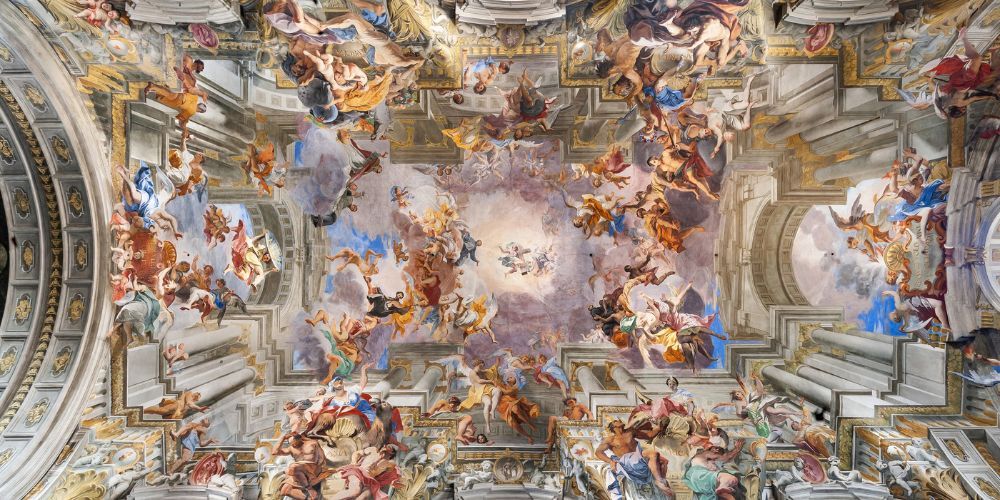
You may not have known it, but Italy can also be a place where the eye gets lost and confused and where reality bends to the play of imagination. Not only art and history, but also wonders that defy perception, illusions that seem to whisper to the eye, “don't trust what you see.” On this somewhat special journey, we will accompany you among deceptive architecture, perspectives that chase each other, and glimpses that seem stolen from a dream.
From North to South Italy, there are places that seem purpose-built to amaze, where stone becomes theater and light the accomplice of a spell. Each stop is an invitation to look harder, to slow down, to indulge in the wonderful doubt between what is and what seems. Ready to be enchanted? The illusion has just begun.
10. The illusion of perspective in the colonnade of St. Peter's Square
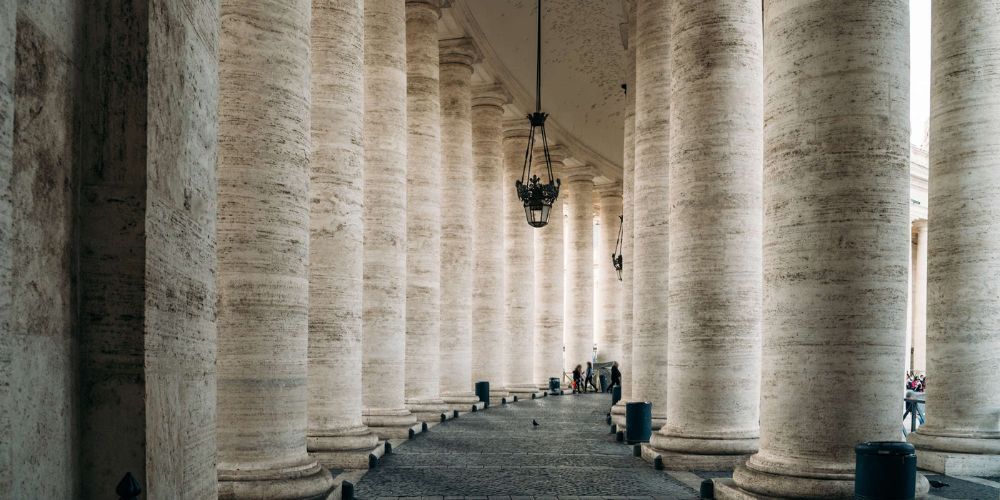
Among the most fascinating optical illusions in Italy, one cannot fail to mention the colonnade of St. Peter's Square, designed by the great Gian Lorenzo Bernini in the seventeenth century at the behest of Pope Alexander VII. The goal was clear: to create a monumental space capable of enhancing the majesty of the Basilica and conveying the power and symbolic embrace of the Catholic Church. The result is an elliptical square, imposing in size (over 300 meters long), surrounded by 284 columns arranged in four rows, each surmounted by a statue of saints or apostles.
But what is really striking is the play of perspectives devised by Bernini: if you stand exactly on a small stone disk set in the floor, near the central obelisk, and look toward the columns, you will see the four rows line up perfectly, until they look like one. This is a deliberate effect, the result of clever “forced perspective”, designed to guide the eye and impress visitors.
It doesn't end there: depending on the angle from which you view them, the columns seem to change shape and even color, creating a continuous illusion between movement, depth and harmony. A masterpiece of ingenuity and beauty, transforming a simple square into a unique visual experience.
Visit St. Peter's Basilica9. The false dome of the church of St. Ignatius of Loyola
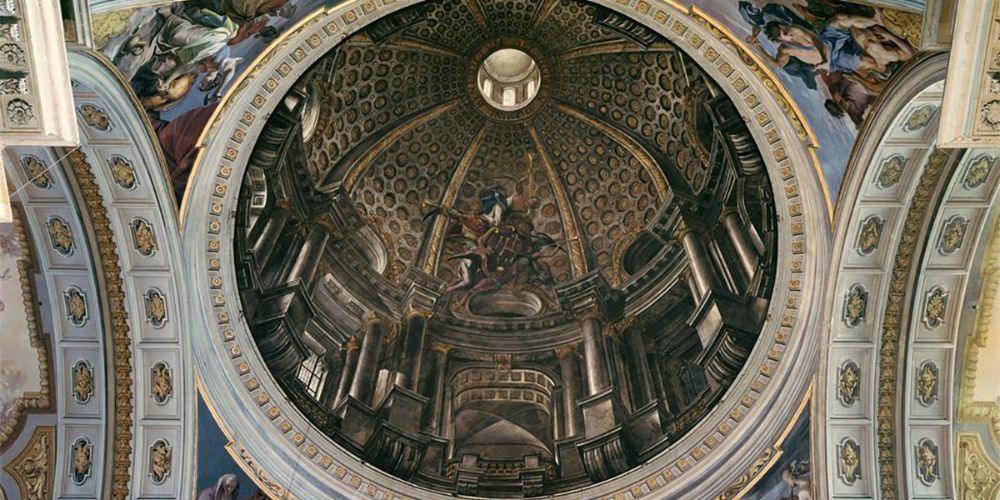
If you find yourself walking around the Pantheon, there is one place that definitely deserves a detour: the Church of St. Ignatius of Loyola. On the surface, one of Rome's many splendid Baroque churches, however, it houses a small masterpiece of optical illusion that leaves anyone speechless.
The author is Andrea Pozzo, a Jesuit and Baroque painter known for his skill in quadratura, a painting technique that creates the illusion of three-dimensional architectural spaces on flat surfaces. In the case of the Church of St. Ignatius, Pozzo outdid himself: instead of the large dome that was originally intended to be built (but was never built because of protests from the adjacent convent), Pozzo painted a false dome on the flat ceiling of the nave.
The result? An optical illusion so perfect that it really looks as if a dome is opening toward the sky. Only by moving from the precise point marked by a golden disk on the floor does the trick reveal itself: the dome “flattens out” and reveals itself for what it is, a refined play of perspective, light and shadow.
It is one of the most extraordinary examples of trompe-l'œil in Rome and a visual experience that uniquely blends art, ingenuity and spirituality.
8. Bramante's fake choir in Milan

Just a few steps from Milan Cathedral hides a small marvel of Renaissance ingenuity: the Church of Santa Maria presso San Satiro. From the outside it may look like any other church, but just cross its threshold to discover one of the most astonishing optical illusions in Italy.
We are in the 15th century, and architect Donato Bramante found himself facing a problem that was anything but simple: the space available to build the choir behind the altar was extremely small, barely a meter. But instead of forgoing the grandeur that an apse would have given the nave, Bramante brought all his genius to bear. He thus creates a masterful trompe-l'œil: he paints a mock apse on a flat wall, using perspective in such a way as to make the structure appear deep and three-dimensional. In front of this surface he builds a small arch, decorating it with architectural elements that visually continue the illusion.
The result is so realistic that many visitors, even today, approach trying to enter the painted space... except to discover that it is only a wall. A hidden masterpiece in the heart of Milan, showing how creativity can overcome even the physical limits of space.
Visit Milan Cathedral7. L'Aquila's Luminous Fountain from which “lava” pours out
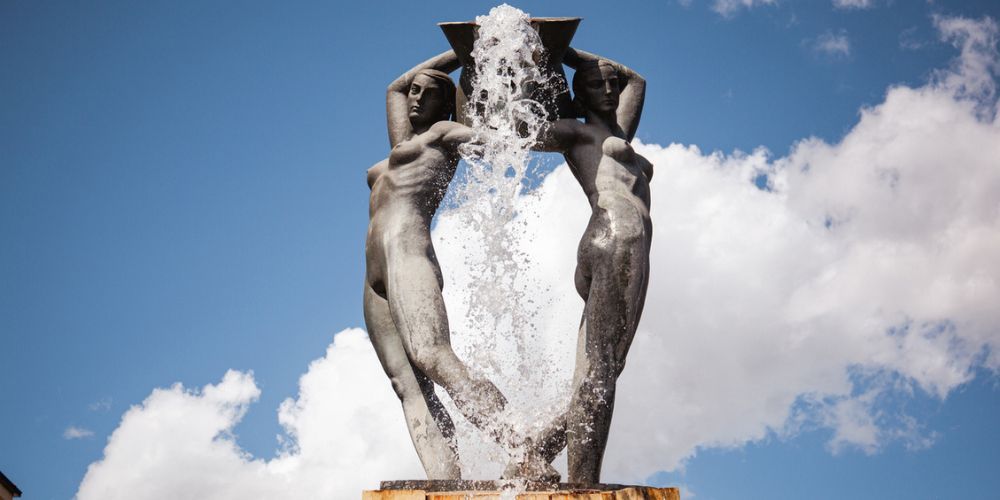
In the heart of L'Aquila, in Piazza Battaglione Alpini, lies a little-known gem but one capable of surprising anyone who observes it: the Luminous Fountain.
Inaugurated in 1934 and designed by sculptor Nicola D'Antino, it is an elegant example of the Art Déco style, with two bronze female figures supporting the traditional Abruzzo basin from which water flows. The composition rests on a circular, slightly raised basin, framed by white steps and two large side spheres that give it a solemn air. But the real spectacle comes with the light. At night, the fountain comes alive thanks to a play of lights and colors that, accompanied by music, gives an almost magical atmosphere.
Yet, it is in daylight that it offers its most striking optical effect: when the sun hits the water coming down from the basin, it creates a reflection so intense and hot that it looks like a glowing lava flow. It is a fascinating illusion that transforms a simple fountain into a small visual miracle, capable of combining art, nature and awe in a single glance.
6. The perspective gallery of Palazzo Spada in Rome
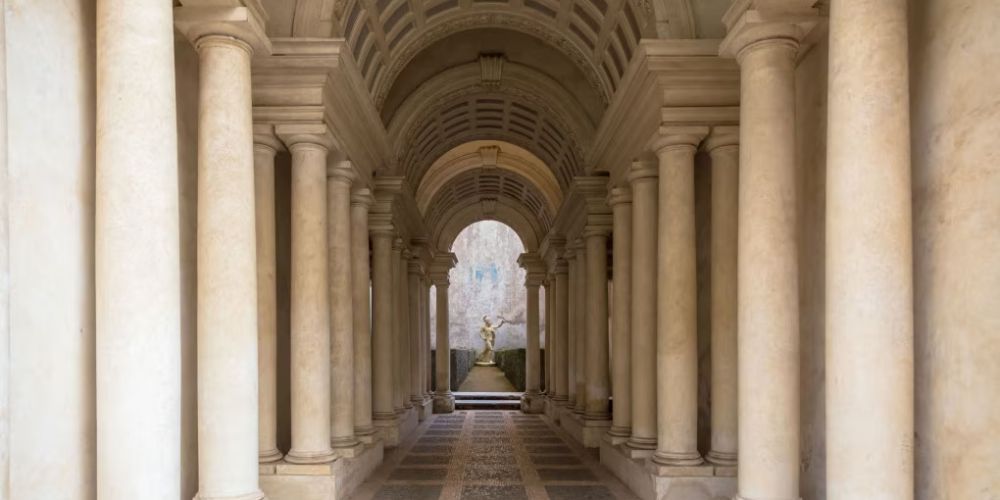
If you think you know all the secrets of Rome, prepare to be surprised! In the heart of the city, between Piazza Farnese and Campo de' Fiori, lies Palazzo Spada, a building that houses a valuable private art collection. But the real wonder is hidden in a quiet corner of the courtyard: an extraordinary creation of Baroque genius Francesco Borromini.
Here, Borromini designed a gallery that takes advantage of forced perspective, a visual trick that makes the gallery seem much longer than it actually is. How did he do this? He arranged columns and arches that gradually decrease in size, creating the illusion of immense depth. To further enhance the effect, he placed a small statue at the end of the courtyard, which, despite appearing to be life-size, is actually only 60 centimeters tall.
The stroke of genius, however, lies in the precise point from which to observe: if one positions oneself exactly on the spot marked in the floor, the columns and arches seem to converge to infinity, and the gallery of only 8 meters appears as a long corridor stretching a full 40 meters. A magnificent example of how art can trick the eye, transforming a simple courtyard into a masterpiece of visual engineering.
5. The illusion of the Fata Morgana on the Strait of Messina

The Strait of Messina, with its breathtaking beauty and view separating Calabria from Sicily, has for centuries been the scene of myths and legends that continue to enchant anyone who ventures into these waters. One of the most fascinating stories is that of the Fata Morgana, an optical phenomenon that transforms the landscape into a hypnotic mirage, like a spell that cancels the distance between the two shores.
Legend has it that Morgana, a cunning and deceitful fairy, inhabited a castle in the depths of the Strait, where she amused herself by misleading anyone who tried to cross it. One day, according to the myth, an Arab king, arriving on the coast of Calabria, was confronted with an incredible vision: Sicily seemed so close to him that he could touch it. Morgana, wrapped in her charm, promised him that he could conquer her, but it was only a deception. The man, convinced that he was now one step away from his goal, jumped into the water, but fell victim to the mirage and drowned.
Today, still, when weather conditions are favorable-especially on warm summer mornings, when the air is humid and the sea calm-the phenomenon of the Fata Morgana is repeated, providing an extraordinary spectacle: houses, buildings and ships seem to float in the void, creating an illusion of suspension that has fascinated sailors and poets since ancient times. A rare and unique phenomenon that makes the Strait of Messina not only a physical boundary, but also a bridge between reality and legend.
4. The floor of Santa Maria del Fiore in Florence
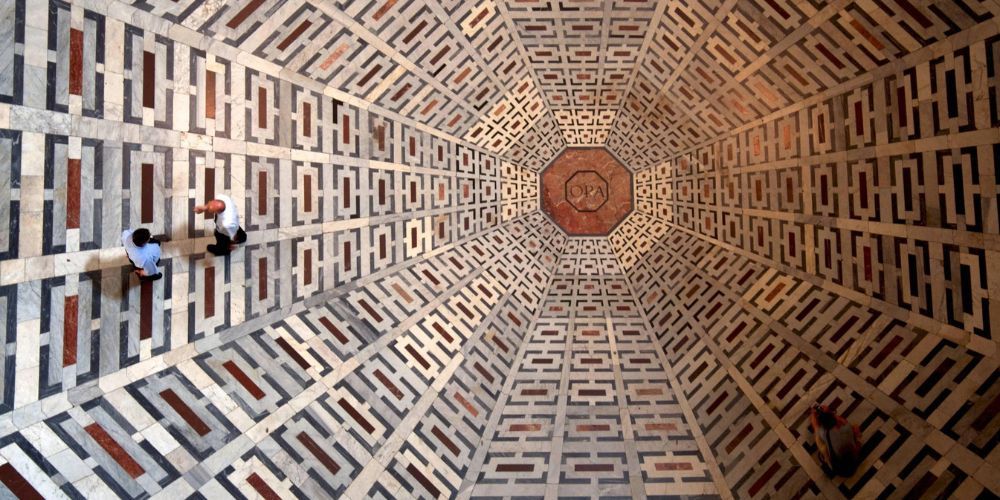
When people talk about extraordinary floor decorations in Italy, many immediately think of the cycles of stories carved into the floor of Siena Cathedral or the large allegorical mosaic in Otranto Cathedral. However, few remember that Florence, as early as the beginning of the 16th century, began the creation of another magnificent work for the Cathedral of Santa Maria del Fiore, a marble inlay floor covering that stands out for its richness and variety of designs and materials.
This floor, originally designed by Cronaca and later enriched by the work of Giuliano di Baccio d'Agnolo and Francesco da Sangallo, is a unique masterpiece in its grandeur and beauty. In 1504, the Consoli dell'Arte della Lana and the workers of the Opera di Santa Maria del Fiore decided to start renovating the floor, beginning with the area around the octagon of the choir. Cronaca, inspired by the vision of the Pantheon and its famous lacunar structures, created a design that symmetrically reflected the space between the top and bottom, as a kind of ideal correspondence between the dome and the floor below. In doing so, he created a perspective illusion that makes the floor appear as a striking concave surface, exactly like an upside-down dome.
This floor, which has kept its magnificence intact over the centuries, is an extraordinary example of Florentine ingenuity and artistic tradition.
3. The illusion of distances of St. Peter's Dome
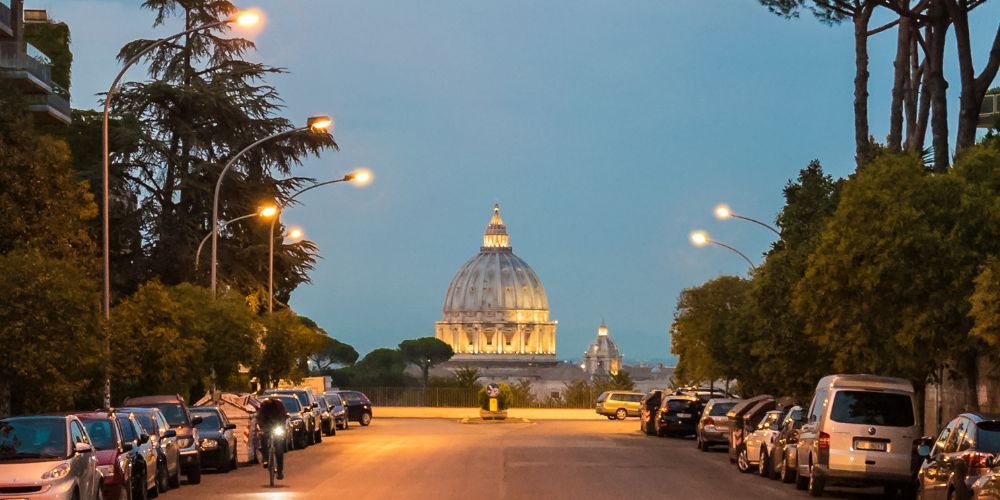
Returning to Rome, we certainly cannot fail to mention one of the most fascinating optical effects in Italy, involving the famous Dome of St. Peter's, affectionately known by Romans as “er Cupolone” because of its imposing size.
The optical illusion can be fully experienced by walking down Via Niccolò Piccolomini, a street located in the Aurelio district, not far from the Vatican. From here, you get a unique view of the dome, but there is a trick that will make this view even more amazing. If you walk down the street in the direction of the dome, you will have the impression that it is receding as you get closer! It's amazing, isn't it? Actually, there is no magic involved, but a perfect play of perspective.
The street is lined with buildings that, at first, you don't notice, and as you approach the dome, your eye begins to perceive the surrounding space, creating the illusion that the dome is moving away. This phenomenon, known as the “Illusion of Contrast”, plays with the dome's round shape and a slight curvature of the horizon. To get this unique experience, you can get there by foot, scooter, car or even cab, but the effect is definitely more spectacular if you are moving on wheels. In short, an optical illusion that, even once explained, deserves to be experienced at least once in a lifetime!
Discover all of Rome with the Visit Rome Pass2. The fake inclination of the Asinelli Tower in Bologna
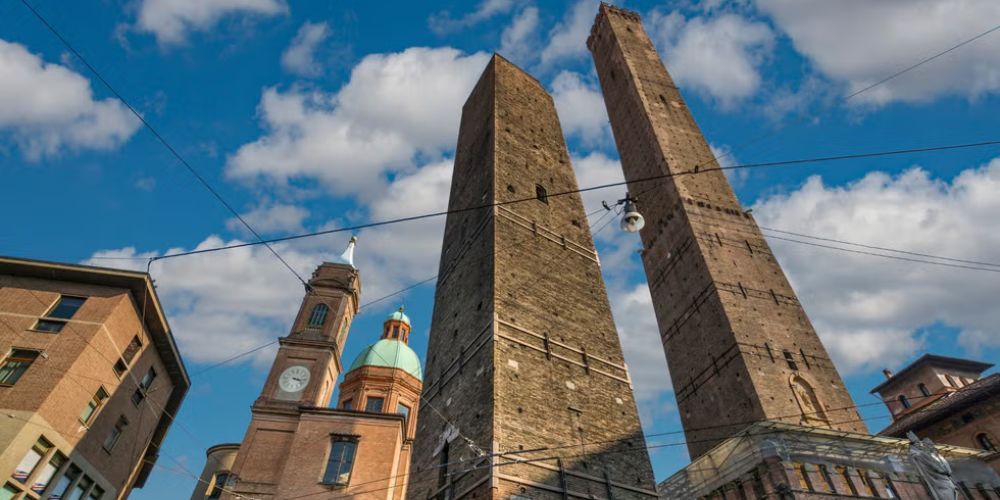
We continue our journey among Italy's most fascinating optical effects with one of Bologna's icons: the Asinelli Tower. Built in the 12th century, this medieval tower is an impressive 97.2 meters high, making it one of the tallest in Italy. One of its most intriguing features is the optical illusion that can be perceived when observing it from its base.
This effect is known as the “leaning tower illusion”. In fact, the tower is not perfectly vertical, but has a slight eastward tilt, which is not immediately obvious, but becomes clearer as you look upward. The effect creates the impression that the tower juts out over the square below, as if it were about to fall. The feeling of leaning is further emphasized by the design of the windows, which are narrower at the top than at the bottom, thus increasing the impression of leaning.
This illusion has fascinated visitors to Bologna for centuries and continues to be one of the city's main tourist attractions.
The tower is open to the public and visitors can climb the 498 steps to the top, from where there are breathtaking panoramic views of the city and surrounding countryside. However, for those who suffer from vertigo, the climb may be challenging, as the tower can sway slightly in the wind and the steps are quite narrow and steep.
1. The optical illusions of Italy: the famous Tower of Pisa
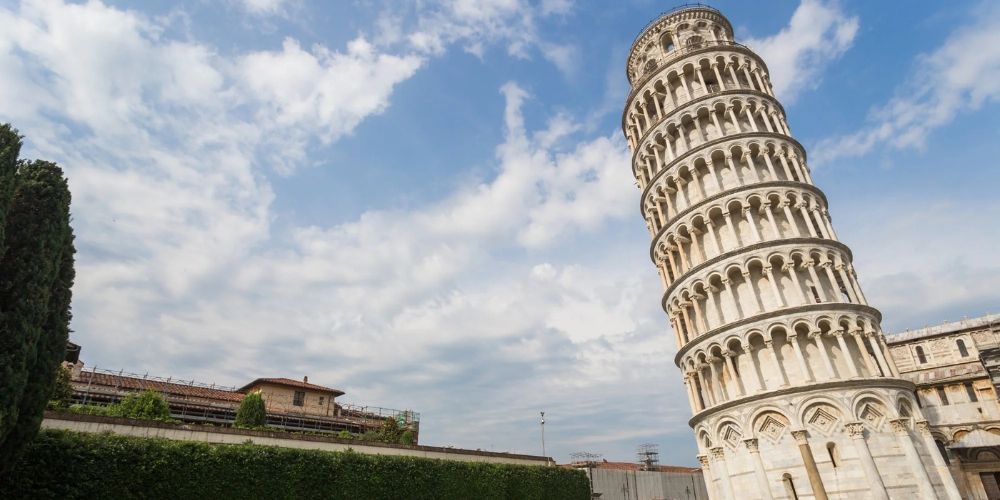
Let us conclude this journey among the wonderful optical illusions of Italy with an almost obligatory stop: the famous Tower of Pisa. Anyone who has passed by there knows that, in front of its iconic tilt, one immediately feels part of a world suspended between reality and fantasy.
The magic happens the moment you prepare for a shot: all it takes is a studied pose - a hand that seems to support it, a foot that seems to push it - and the Tower of Pisa, while standing still, is transformed into an incredible optical illusion. This perspective game is now a classic for tourists who try their hand at increasingly imaginative and, why not, exaggerated poses, with the aim of creating fun and original photos.
The truth, however, is that the secret is not in the tower, but in the observing eye: it is perspective that does its own enchantment, making reality bend with the imagination. Walk along the Piazza dei Miracoli and be captivated by this play of perspective, where gravity seems to stop. An experience you cannot miss, and who knows, maybe you too will be able to take a photo that will leave everyone speechless!
Discover the Tower of PisaAbout the author
Written on 07/05/2025

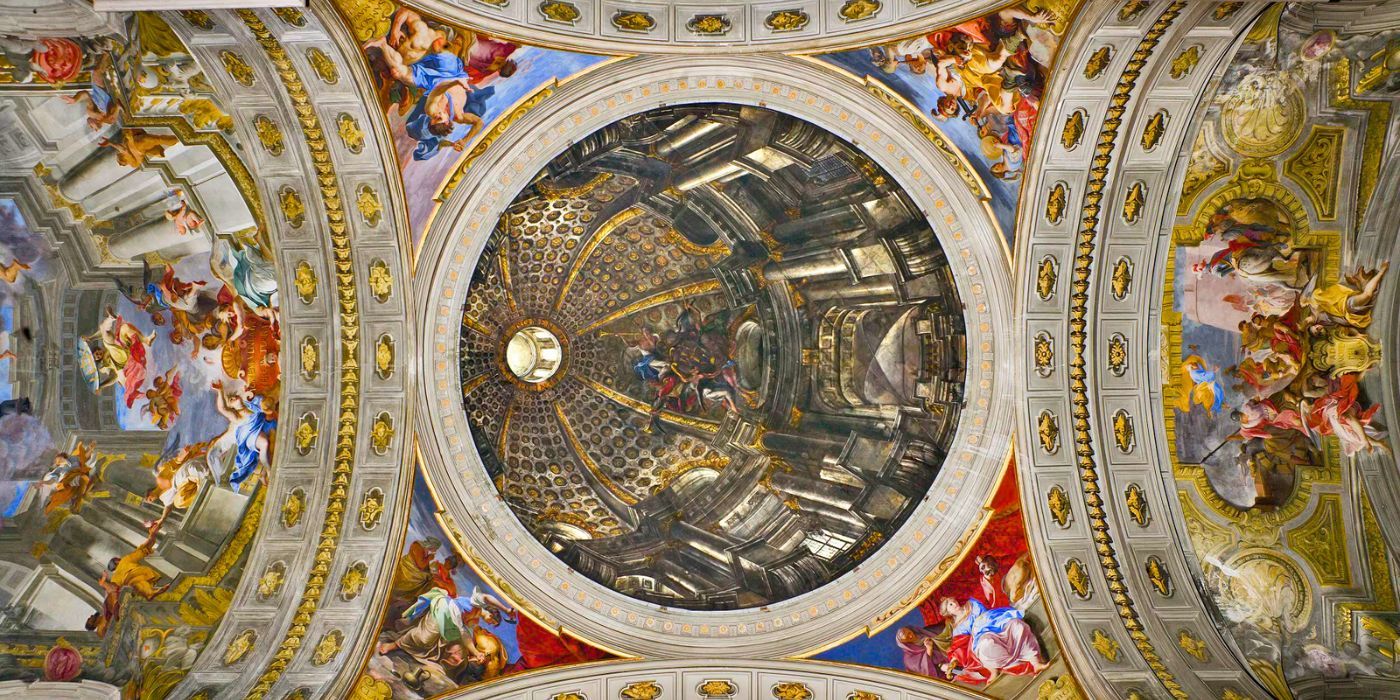

Luciano Siviglia
Discover 10 optical illusions in Italy that trick the eye and inspire wonder: a journey through art, science and architecture.